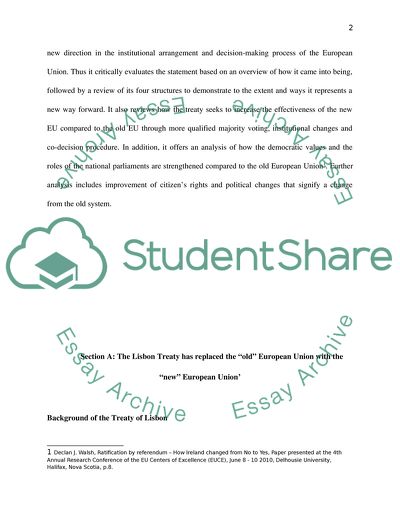Cite this document
(“The Lisbon Treaty has replaced the old European Union with the new Essay”, n.d.)
Retrieved from https://studentshare.org/law/1617464-the-lisbon-treaty-has-replaced-the-old-european-union-with-the-new-european-union-schtze-2012-critically-evaluate-this-statement-with-a-view-to-demonstrating-to-what-extent-and-in-what-ways-the-lisbon-treaty-represents-a-new-dir
Retrieved from https://studentshare.org/law/1617464-the-lisbon-treaty-has-replaced-the-old-european-union-with-the-new-european-union-schtze-2012-critically-evaluate-this-statement-with-a-view-to-demonstrating-to-what-extent-and-in-what-ways-the-lisbon-treaty-represents-a-new-dir
(The Lisbon Treaty Has Replaced the Old European Union With the New Essay)
https://studentshare.org/law/1617464-the-lisbon-treaty-has-replaced-the-old-european-union-with-the-new-european-union-schtze-2012-critically-evaluate-this-statement-with-a-view-to-demonstrating-to-what-extent-and-in-what-ways-the-lisbon-treaty-represents-a-new-dir.
https://studentshare.org/law/1617464-the-lisbon-treaty-has-replaced-the-old-european-union-with-the-new-european-union-schtze-2012-critically-evaluate-this-statement-with-a-view-to-demonstrating-to-what-extent-and-in-what-ways-the-lisbon-treaty-represents-a-new-dir.
“The Lisbon Treaty Has Replaced the Old European Union With the New Essay”, n.d. https://studentshare.org/law/1617464-the-lisbon-treaty-has-replaced-the-old-european-union-with-the-new-european-union-schtze-2012-critically-evaluate-this-statement-with-a-view-to-demonstrating-to-what-extent-and-in-what-ways-the-lisbon-treaty-represents-a-new-dir.


